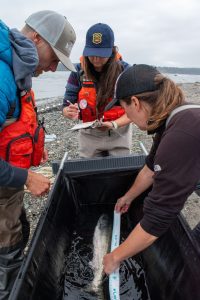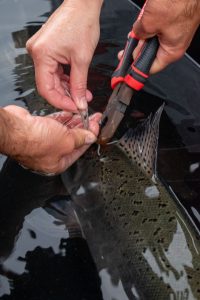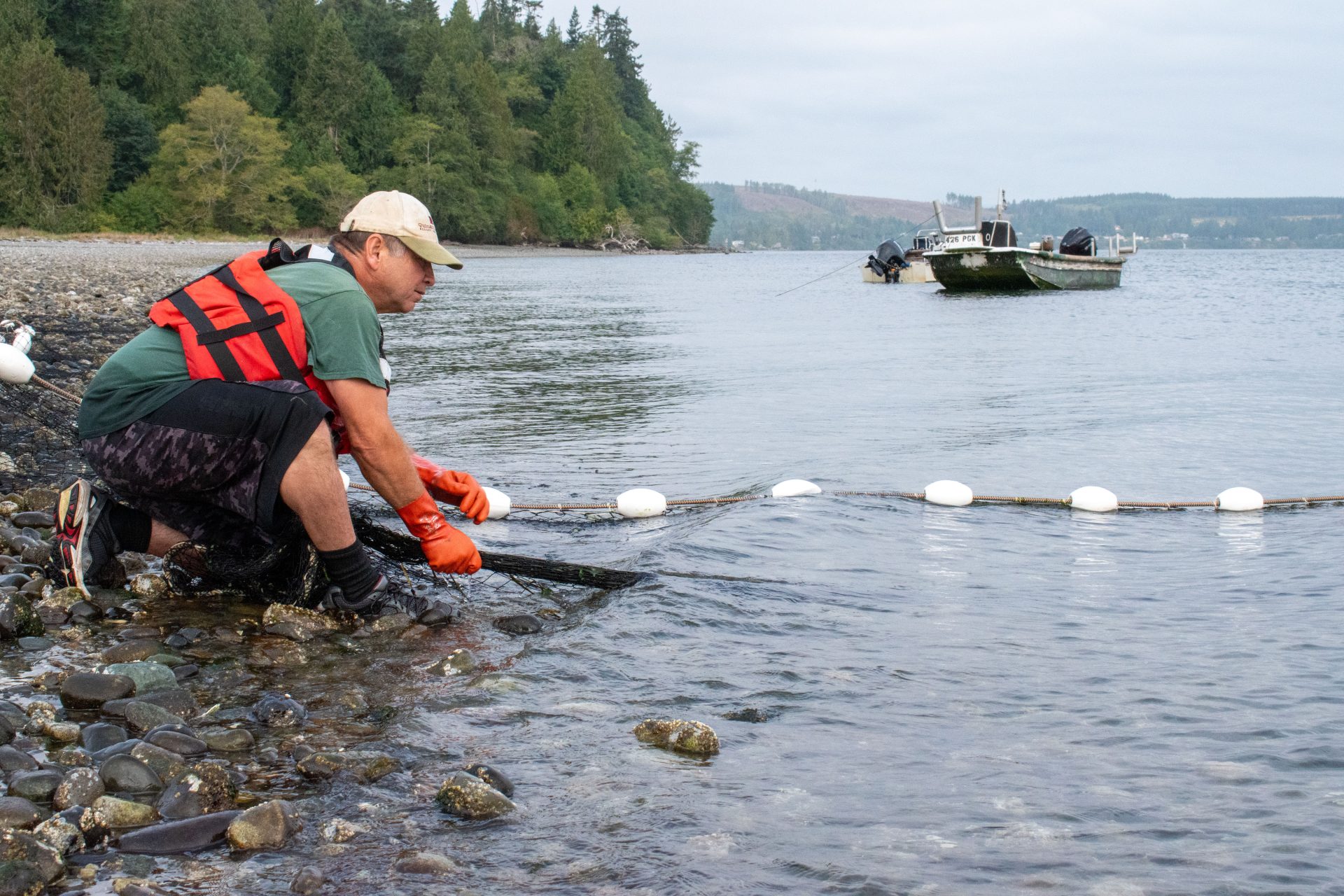While the Port Gamble S’Klallam Tribe knows from recent studies that only half of out-migrating juvenile fish are getting past the Hood Canal Bridge, the next question is—what about returning adults?
That led staff from the tribe, National Oceanic and Atmospheric Administration (NOAA) and Long Live the Kings to beach seine and tag adult chinook salmon near the bridge last summer. The goal was to get acoustic tags on 30 chinook in 2023 as they made their way back to their natal streams, but the team ended up tagging only 15.

“We’re tagging them before they reach the bridge and hope to track their migration past the bridge to see if they’re delayed, if there are predation events that we can record, and whether the Hood Canal Bridge is a factor in disrupting migration and causing mortality,” said Megan Moore, NOAA research fisheries biologist.
For returning chum salmon, the tribe and NOAA partnered with the Washington Department of Fish and Wildlife to seine and tag 50 of the fish through October, plus take genetic samples to look at the makeup of the North Hood Canal population, said Hans Daubenberger, the tribe’s senior research scientist.
“Fish coming back to Hood Canal are mixed with fish going back to Puget Sound,” he said. “The fall chum population is healthy and is a pretty important fishery, but some of the fall chum fisheries in Puget Sound aren’t performing as well. Understanding the makeup of that stock of fish is pretty important.”
There are 40 acoustic receivers at the bridge that pick up signals from tagged fish. After the runs end, the data is retrieved and analyzed.
This multi-partner project looking at causes of high mortality rates at the bridge is part of the larger Salish Sea Marine Survival Project for salmon. More is known about the behavior of juvenile fish at the bridge because acoustic tagging studies on smolts have been happening since 2006, while adult fish were first tagged in 2022.

“With adult fish, we don’t have a very good handle on whether the bridge affects their migration or if that leads to greater mortality,” Daubenberger said.
As for predation, sea lions feed on adult salmon in the fall, and seals and harbor porpoises prey on juvenile fish in the spring, he said. Scientists can tell when tagged fish have been eaten because the tags have temperature sensors.
“When they’re in the stomachs of marine mammals, you get a temperature that goes up, and you can tell where they get eaten, as long as it’s within the vicinity of the receiver,” Moore said. “Last year, we actually didn’t see a high number of predation events for adult salmon, especially relative to the number of smolts that get eaten.”
Above: Port Gamble S’Klallam Tribe fisherman Matt Ives pulls in a beach seine to collect adult chinook for a study on how the fish are navigating the Hood Canal Bridge. Story and photos: Tiffany Royal




